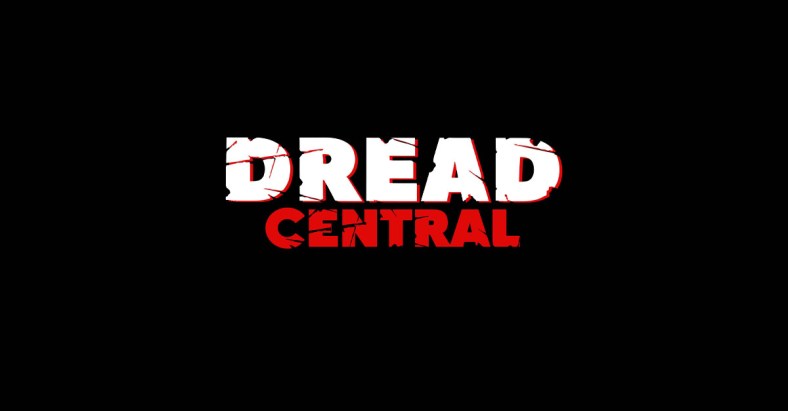BWtFS: How MIDSOMMAR Tests the Limits of American Isolationism

“Brennan Went to Film School” is a column that proves that horror has just as much to say about the world as your average Oscar nominee. Probably more, if we’re being honest.
***A Warning: This column contains plot spoilers for Midsommar***
The theme of this month at Dread is “Camps and Cabins”, and while summer camp slashers are certainly my forté, I already wrote a slasher piece last month. Plus, I already performed a pretty thorough debunking of the fallacy of the idea of the Cabin in the Woods in January, so I kinda felt like I’d written myself into a corner. Enter Midsommar. It’s got a couple cabins and there’s woods around so it doesn’t not work. Here we go!
Obviously, there’s a lot of reasons to be interested in Midsommar. The slow implosion of a toxic relationship, the strong Wicker Man vibes, and the uncanny dread-inducing constant sunlight. But the element that caught my attention the most is a well-worn horror movie trope: The Americans Abroad.
Horror movies love to take Americans out of their cozy suburban lives and thrust them into a foreign country where some terrible fate befalls them. You know this if you’ve seen any of the Hostel movies. Or The Ruins. Turistas. Chernobyl Diaries. The Human Centipede. I could go on. Good or bad, these movies tend to be rather xenophobic, implying that America is the only country where things are safe and “right.”
Midsommar is definitely operating in this vein, but something I love about it is that it flips the script in one major way. Sure, Americans being brought to Sweden for a midsummer death festival seems par for the course for this type of film. But the isolation of this particular community makes it clear that it isn’t Sweden as a whole that’s like this, merely this one cloistered group. And that allows it to play with an element that makes it less Hostel and more (follow me here) Borat.
You see, the central element of Borat is Sacha Baron Cohen as a hapless Kazakhstani testing the limits of what Americans will put up with in the name of politeness and “tolerance.” Obviously, this breaks bad for him on many occasions, but some of the funniest scenes are the ones that don’t. Think of the dinner party scene with his etiquette coach.

What his film seeks to prove, other than the fact that post-9/11 America is a tough place to not be white, is that Americans are so hermetically sealed off from global culture that they will write off even the most bizarre behaviors, assuming that it’s just a cultural custom they haven’t heard of.
This very same thing happens in Midsommar time and again. Literally, the very second the Americans arrive in the village, they’re greeted by people in frocks playing flutes and chugging hallucinogenic tea. Anybody would see that as a warning sign that they’re visiting a cult, but because they’re in Sweden they can wave it away with, “ah, those crazy Swedes,” and politely try to “acclimate,” as Christian puts it.
Even though they have a Swedish friend, they’ve put no effort into learning a single thing about Swedish culture, and their sheltered lives in America have never previously exposed them to any of it. They attempt to acclimate either because they assume this is something they don’t know, or they’re embarrassed they didn’t put any effort into learning about this place. Either way, it starts them down a slippery slope toward picking flowers backward, sleeping in one huge communal hall, and… watching people tumble to their deaths from a massive rocky outcropping.
Notice that the only people really freaking out about the sacrifice they witness are the British visitors. They’ve seen enough of European culture to know that this is not how it’s supposed to go, but most of the Americans take it in stride, either attempting to seem academically objective or by virtue of being totally clueless.

Because Midsommar chooses this particular approach to its horror, it avoids some if not all of the xenophobic arguments one might make against them. It’s about insularity and ignorance, arguing that while America might be bigger than the Swedish cult, they might both be equally isolated and unaware of the goings-on of the world around them. The danger this ignorance poses becomes quite clear by the end of the film, but by that time it’s waaaaaaay too late.
Midsommar is a searing indictment of a lot of human behavior, but the real villain of the film is ignorance. If the Americans had any clue about the rest of the world, none of this would have happened. They would have never taken the tea, turned around immediately, and had a great vacation in Stockholm. Mark still would have been an asshole, but they would have all gotten out alive. Being a tourist isn’t the problem, it’s not giving a rat’s ass about the culture and customs of the place that you’re touring. Next time Dani goes on vacation with a boyfriend, let’s hope she’s learned not to get Boratted.
Brennan Klein is a writer and podcaster who talks horror movies every chance he gets. And when you’re talking to him about something else, he’s probably thinking about horror movies. On his blog, Popcorn Culture, he is running through reviews of every slasher film of the 1980s, and on his podcast, Scream 101, he and a non-horror nerd co-host tackle horror franchises from tip to tail! He also produces the LGBTQ horror podcast Attack of the Queerwolf! on the Blumhouse Podcast Network.
Categorized:Brennan Went To Film School Editorials News

